Equipment
Project X Denali Blue, Black shaft Review – Club Junkie Review
Originally, Project X was known for low-spin steel iron shafts. However, the company might now be known for wood shafts. Denali is the newest line of graphite shafts from Project X. With the Denali line, the company focuses on feel as well as performance.
There are two profiles in the Denali line, Blue and Black, to fit different launch windows. Denali Blue is the mid-launch and mid-spin profile for players who are looking for a little added launch and Denali Black is designed for low-launch and low-spin. Both models are going to offer you a smooth feel and accuracy.
For a full in-depth review check out the Club Junkie podcast on all podcast streaming platforms and on YouTube.
Project X Denali Blue
I typically fit better into mid-launch shafts, as I don’t hit a very high ball so the Denali Blue was the model I was more excited to try. Out of the box, the shaft looks great and from a distance, it is almost hard to tell the dark blue from the Denali Black. With a logo down install of the shaft, you don’t have anything to distract your eyes, just a clean look with the transition from the white and silver handle section to the dark navy mid and tip.
Out on the course, the Blue offers a very smooth feel that gives you a good kick at impact. The shaft loads easily and you can feel the slightly softer handle section compared to the HZRDUS lineup. This gives the shaft a really good feel of it loading on the transition to the downswing, and as your hands get to impact, the Denali Blue keeps going for a nice, strong kick.
Denali Blue is easy to square up at impact and even turn over to hit it straight or just little draws and most of the flex of the shaft feels like it happens right around where the paint changes from silver to blue. The Blue launches easily and produces what I consider a true mid-flight with the driver. While it is listed as mid-spin, I never noticed any type of rise in my drives. Drives that I didn’t hit perfectly were met with good stability and a ball that stayed online well.
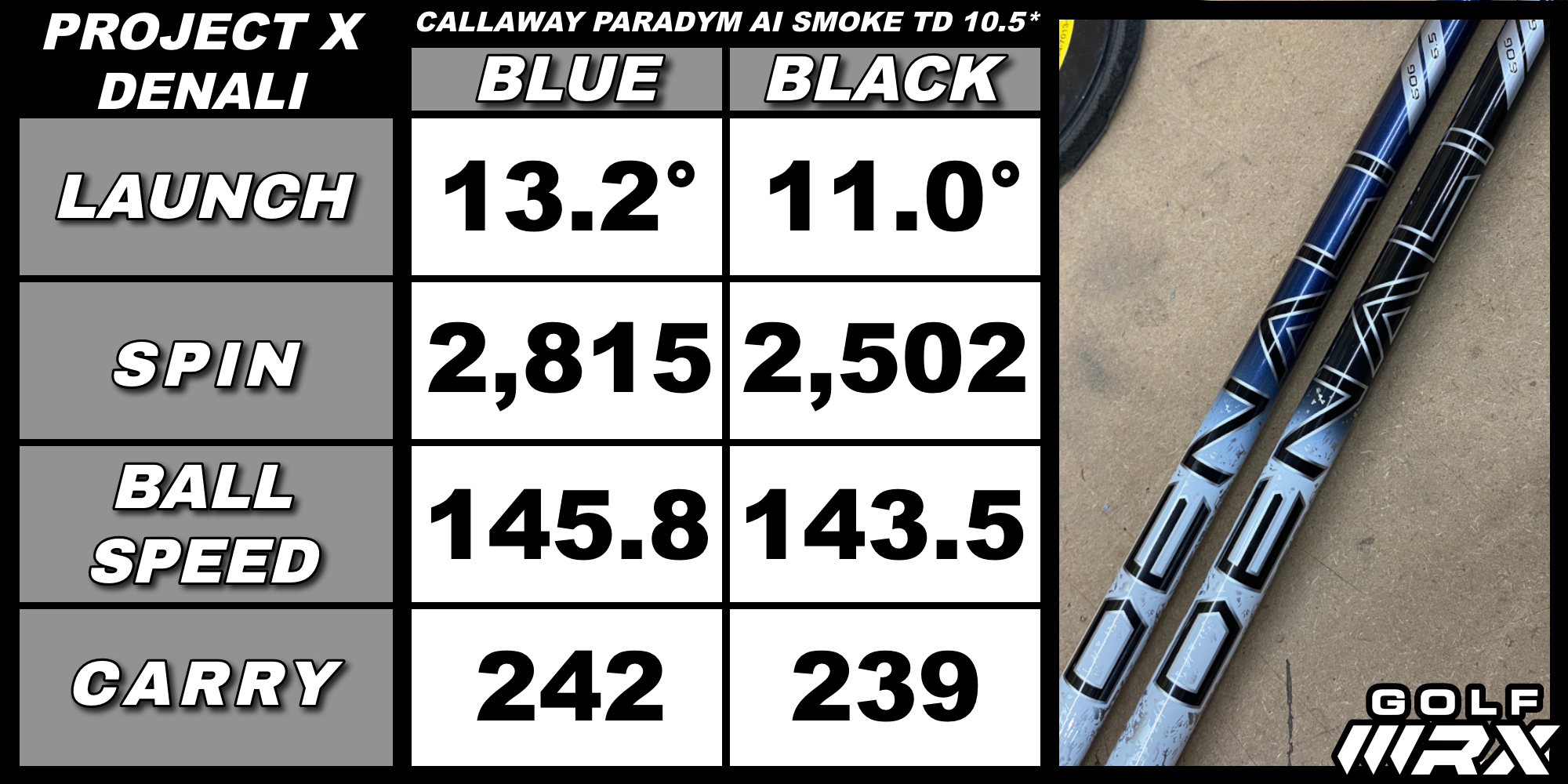
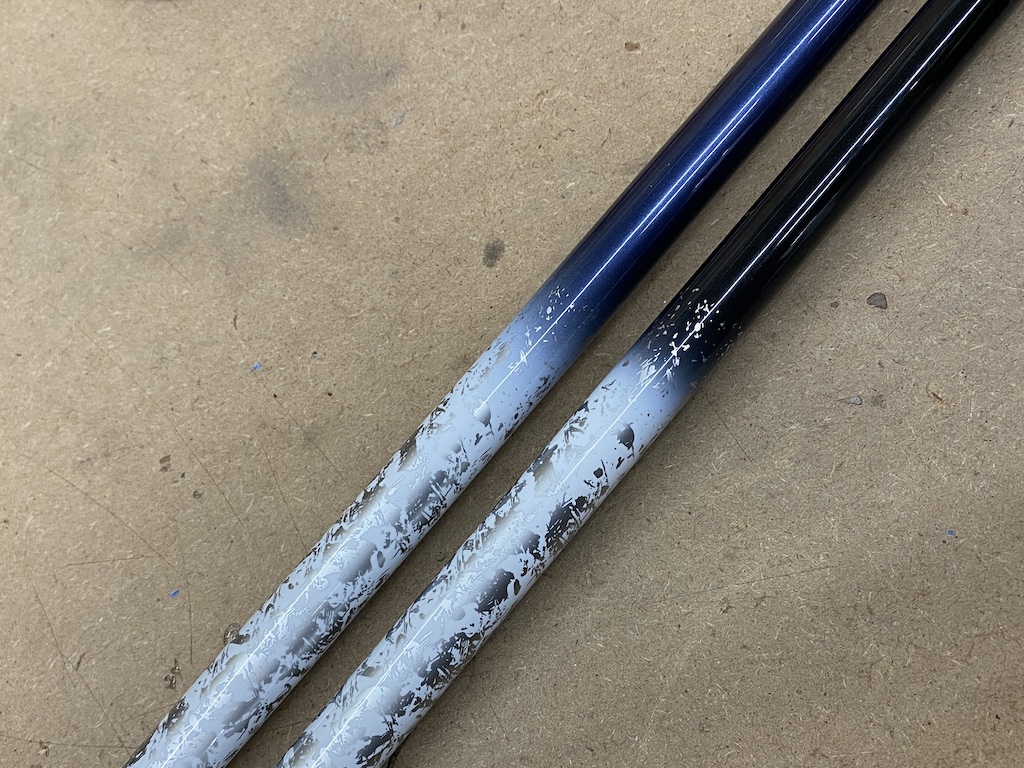
Project X Denali Black
When you hold the Denali Black in your hands you can tell it is a more stout shaft compared to its Blue sibling by just trying to bend it. While the handle feels close to the Blue in terms of stiffness, you can tell the tip is much stiffer when you swing it.
Denali Black definitely takes a little more power to load it but the shaft is still smooth and doesn’t give you any harsh vibrations. Where the Blue kicks hard at impact, the Black holds on a little and feels like keeps you in control even on swings that you try and put a little extra effort into. The stiff tip section also makes it a little harder to square up at impact and for some players could take away a little of the draw from their shot.
Launch is lower and more penetrating compared to the Blue and produces a boring, flat trajectory. Shots into the wind don’t rise or spin up, proving that the spin stays down. Like its mid-launch sibling, the Black is very stable and mishits and keeps the ball on a straighter line. Shots low off the face don’t get very high up in the air, but the low spin properties get the ball out there farther than you would expect. For being such a stout shaft, the feel is very good, and the Denali Black does keep harsh vibrations from your hands.
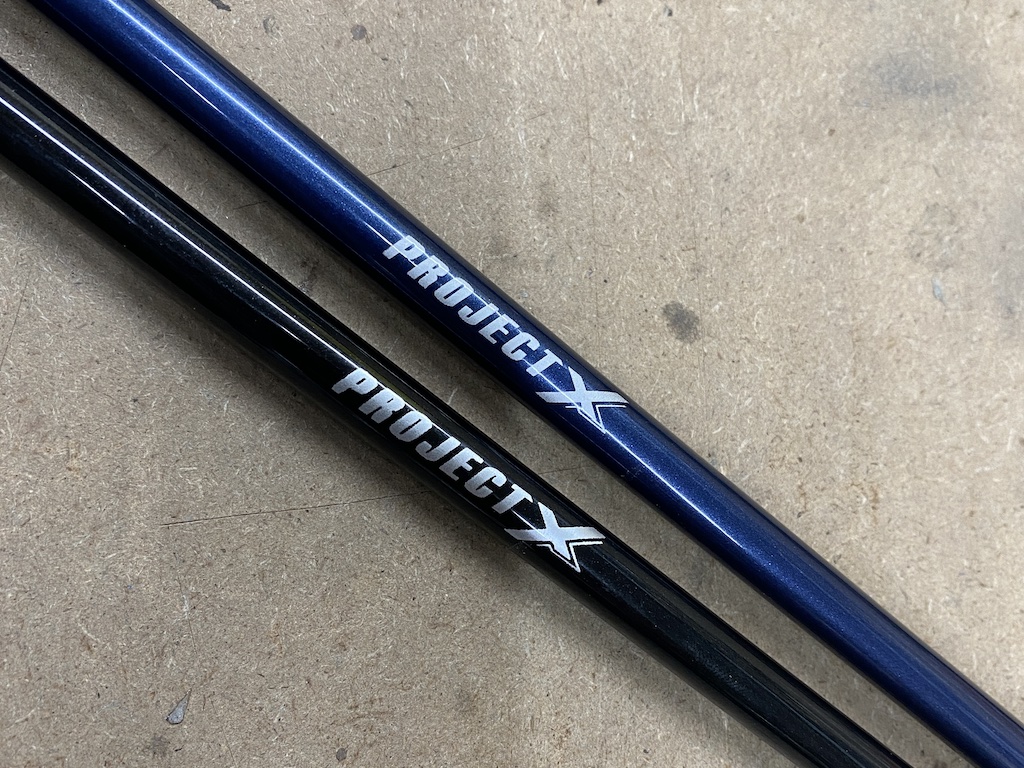
Overall the Project X Denali Blue and Black are great additions to the line of popular wood shafts. If you are looking for good feel and solid performance the Denali line is worth trying out with your swing. Choose Blue for mid-launch and mid-spin or Black for lower launch and low spin.
- LIKE0
- LEGIT0
- WOW0
- LOL0
- IDHT0
- FLOP0
- OB0
- SHANK0
Equipment
What we know about Bryson DeChambeau’s 3D-printed Avoda irons
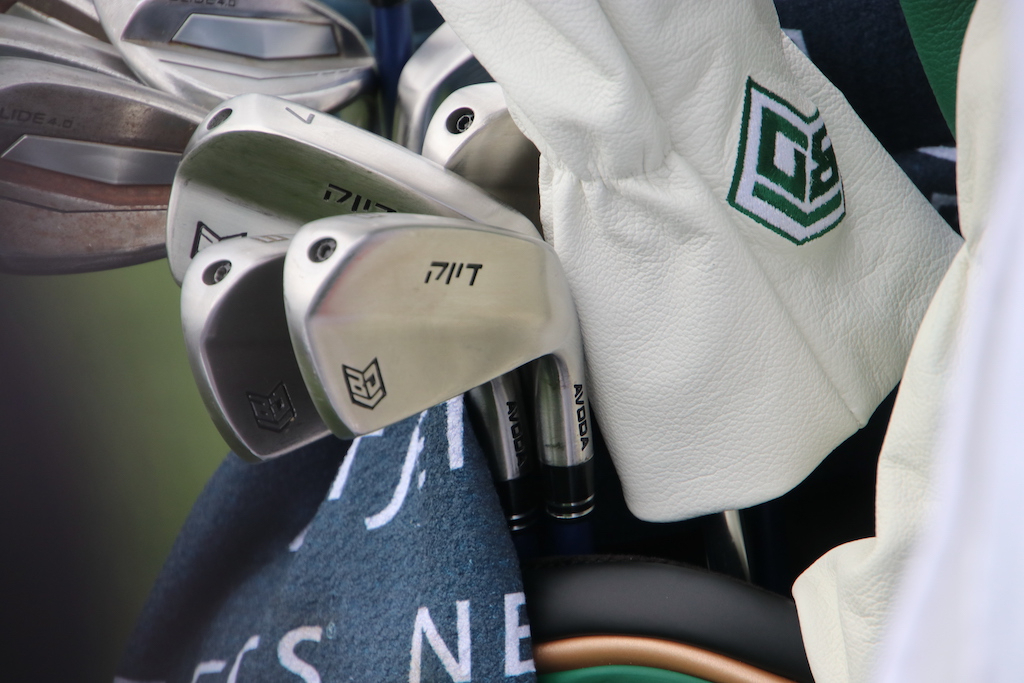
Bryson DeChambeau fired an opening-round 7-under 65 at Augusta National, hitting an impressive 15 of 18 greens in regulation in the process. Golf’s mad scientist’s play grabbed headlines and so too did his equipment. In place of the Ping i230 irons he had in the bag last week for LIV Golf’s Miami event, DeChambeau is gaming a prototype 5-PW set of irons from little-known direct-to-consumer manufacturer Avoda.
What is Avoda Golf?
Founded by Tom Bailey, also a Mike Schy student like Bryson DeChambeau, Avoda Golf is a direct-to-consumer golf equipment company that currently manufactures both single and variable-length irons in one model that are available for pre-order.
What irons is Bryson DeChambeau playing?
Per multiple reports, DeChambeau is playing a custom-designed set of single-length irons that incorporate bulge and roll into the face design. The two-piece 3D-printed irons were reportedly only approved for play by the USGA this week, according to Golfweek’s Adam Schupak.
Regarding the irons, DeChambeau told Golf Channel the irons’ performance on mishits was the determining factor in putting them in play this week. “When I mishit on the toe or the heel,” DeChambeau said. “It seems to fly a lot straighter for me and that’s what has allowed me to be more comfortable over the ball.”
What can we tell about the design of the clubs?
These days, it is a little hard to speculate on what is under the hood with so many hollow body irons. DeChambeau’s irons look to be hollow on the lower section as they do flare back a decent amount. That “muscle” on the back also looks to be fairly low on the iron head, but we can assume that is progressive through the set, moving up higher in the short irons.
A screw out on the toe is probably used to seal up the hollow cavity and used as a weight to dial in the swing weight of the club. From pictures, it is hard to tell but the sole looks to have a little curve from heel to toe while also having some sharper angles on them. A more boxy and sharper toe section looks to be the design that suits Bryson’s eye based on the irons he has gravitated toward recently.
What are bulge and roll, again?
Two types of curvature in a club face, traditionally incorporated only in wood design. Bulge is heel-toe curvature. Roll is crown-sole curvature. Both design elements are designed to mitigate gear effect on off-center strikes and produce shots that finish closer to the intended target line. (GolfTec has an excellent overview of bulge and roll with some handy GIFs for the visual learner)
What else is in DeChambeau’s bag?
Accompanying his traditional Sik putter, Bryson builds his set with a Ping Glide 4.0 wedges, a Krank Formula Fire driver and 5-wood, and a TaylorMade BRNR Mini Driver, all with LA Golf graphite shafts.
- LIKE0
- LEGIT0
- WOW0
- LOL0
- IDHT0
- FLOP0
- OB0
- SHANK0
Equipment
Best irons in golf of 2024: Top overall performers

In our effort to assemble the 2024 best irons, we have again compiled an expert panel of fitters to help you find out which of the 2024 irons is best for your game.
Ultimately the best way to find your personal best iron set is to work with a professional fitter using a launch monitor. The difficult part is a lot of people don’t have easy access to fitters, launch monitors, and club builders — so at GolfWRX, we have done a lot of the work for you.
 We are in the era of not just maximizing distance but also minimizing the penalty of common misses for each player — this applies to irons just as much as it does with any other club in the bag. And of course, proper set makeup and gapping is essential. This is why, now more than ever, custom fitting is essential to help you see results on every swing you make.
We are in the era of not just maximizing distance but also minimizing the penalty of common misses for each player — this applies to irons just as much as it does with any other club in the bag. And of course, proper set makeup and gapping is essential. This is why, now more than ever, custom fitting is essential to help you see results on every swing you make.
We want to give you the tools and information to go out and find what works best for you by offering recommendations for your individual iron set wants and needs with insight and feedback from the people who work every single day to help golfers get peak performance out of their equipment.
Best irons of 2024: The process
The best fitters in the world see all the options available in the marketplace, analyze their performance traits, and pull from that internal database of knowledge and experience like a supercomputer when they are working with a golfer.
It’s essentially a huge decision tree derived from experience and boiled down to a starting point of options—and it has nothing to do with a handicap!
Modern iron sets are designed into player categories that overlap the outdated “what’s your handicap?” model, and at GolfWRX we believe it was important to go beyond handicap and ask specific questions about the most crucial performance elements fitters are looking at.
These are the best iron categories we have developed to help you determine which category is most important for your swing and game.
Best irons of 2024: The categories
- Overall performance
- Easiest to launch/Slower swing speed
- Pure enjoyment
- Shotmakers
- Most technology-packed
- Best blade
2024 Best irons: Top overall performers

This category is the perfect place to start if you’re not quite sure what you are looking for. Distance? Check. Forgiveness? Check. Sleek looks? Check. The top five in the “best irons overall” category are perfect for those golfers who appreciate technology and want something that is going to give them shot options.
Srixon ZX5 Mk II

Their story: MainFrame v2 was developed with an Automated Intelligence process, flex-maximizing variable thickness pattern of grooves, channels, and cavities carefully milled into the backside of Z ZX5 iron faces for high ball speeds. Not only does MainFrame boost COR, but it also repositions mass away from the face and into the toe and sole for a lower CG for easier launch, more consistency, and forgiveness.
Fitter comments:
- “I’m a big believer in the V-Sole. For high-speed guys who want a little forgiveness and are steep, it just doesn’t stick in the ground. Super soft and high launching. Not a ton of offset. It’s also been a good fit for moderate-to-high handicappers.”
- “So I would say it, it kind of stands out in its category because it does launch higher than its competitors. It also sits in between some of the models, like, it doesn’t directly compete with a hollow cavity and it doesn’t compete with, like the Cobra King Tour. Like, it’s a degree stronger. For a forged iron, it performs great for us. The only problem is that it is a little bit light in a swing weight, so we have to be careful of who we fit.”
- “It’s definitely one of our more popular irons for sure. You know, you get a guy who wants to play something small but still wants something more forgiving, and they don’t want kind of that full hollow body iron. I mean, that’s definitely one of our best sellers for sure. We’re seeing that a lot of combos — that’s a one iron that you can definitely combo with the ZX7 for sure.”
- “I think a lot of guys like the concept of the V-Sole with them…If you’re talking an overall package, you know, for the guy that is looking for something clean. That’s a spectacular golf club. Good looks and good feel and great, you know, great performance, and it fits a lot of categories.”
- “I think the one struggle a lot of companies have with that category is getting something to spin, so to try and give like guys so they don’t get those knuckleball shots or that fly out of the rough that goes 20 yards longer. I kind of think that that’s what I think makes that item so good is you get some spin on it, and I think it, it looks and feels good enough that like it, a guy that’s a mid-single digit can play it and be like, yeah, that’s good enough for me. But it’s also forgiving enough that a guy that’s in that kind of 12-to-15 kind of category if he wants to reach a little bit and play something that might look a little bit better. It just fits such a huge, huge range of players. I think it’s just awesome.”
For more photos/info, read our launch piece.
TaylorMade P790
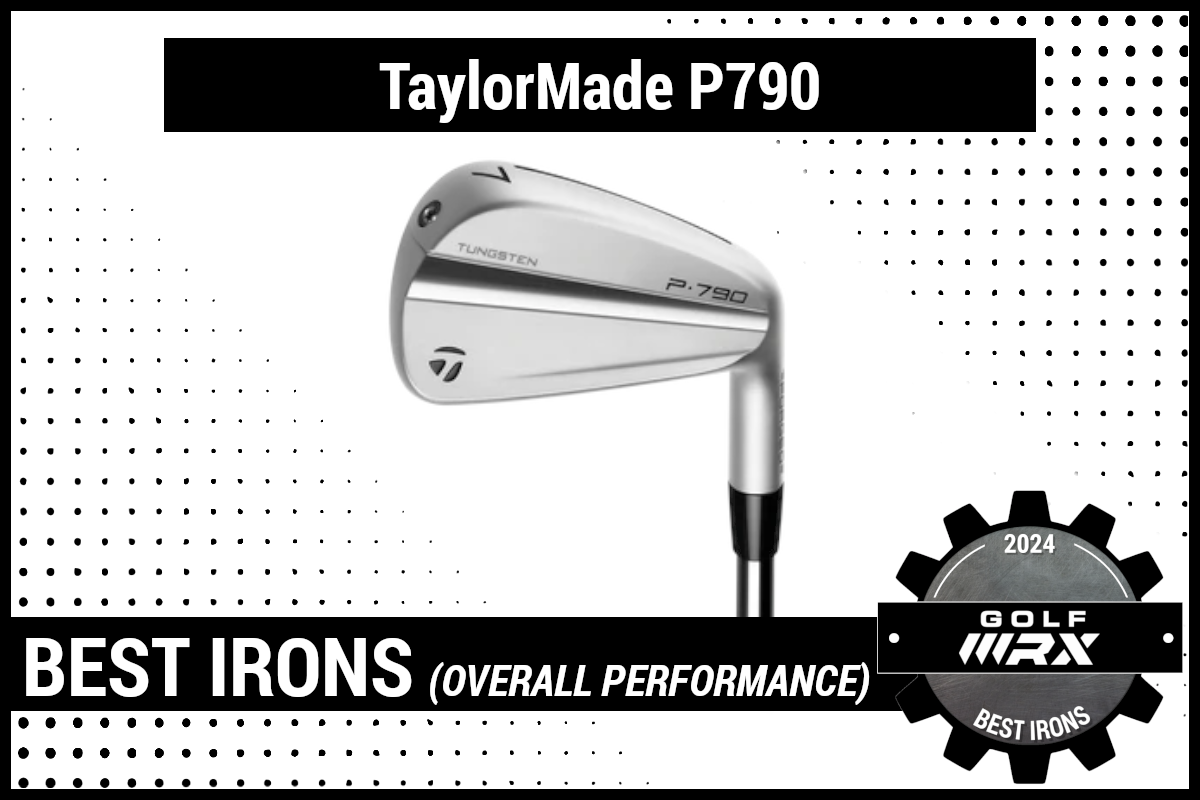
Their story: Engineers utilized the variables of tungsten weighting, SpeedFoam Air, and internal mass — with an assist from AI — to precisely give golfers what they need in each iron. For example, launch and forgiveness in the long irons. More specifically, TaylorMade is using what the company calls FLTD CG (flighted CG) to strategically position CG throughout the set (lower in the long irons, higher in the short irons). CG is positioned almost a millimeter lower in the long irons compared to previous generations. In the shorter irons, the higher CG positions allowed engineers to dial in spin and promote accuracy.
Fitter comments:
- “Best combination of everything. The amalgamation of all irons on the market blended into one mathematically perfect design.”
- “I think people recognize the name. It’s a very popular club. It stands up to every model in a category.”
- “That’s the staple in the players distance category. It’s year-in, year-out. It’s tough to beat TaylorMade — they don’t go wrong with that iron, for sure. They make little refinements, but it’s almost like, yeah, just keep making little refinements. Don’t kind of mess that up just because the, I mean, it, it fits such a wide range of players and it’s just such a good iron that fits a wide, wide range of handicaps.”
- “I think where TaylorMade kind of struggled over the past is getting that spin on the golf club, and I think each generation it just keeps getting better. I think they did an awesome job.”
- “If it’s not our best-selling iron in the fitting center, it’s always like number two. It’s such a great, great performer across the board. And yeah, it just keeps getting better every year. It’s really awesome; crazy distance on that thing too.”
For more photos/info, read our launch piece.
Titleist T150
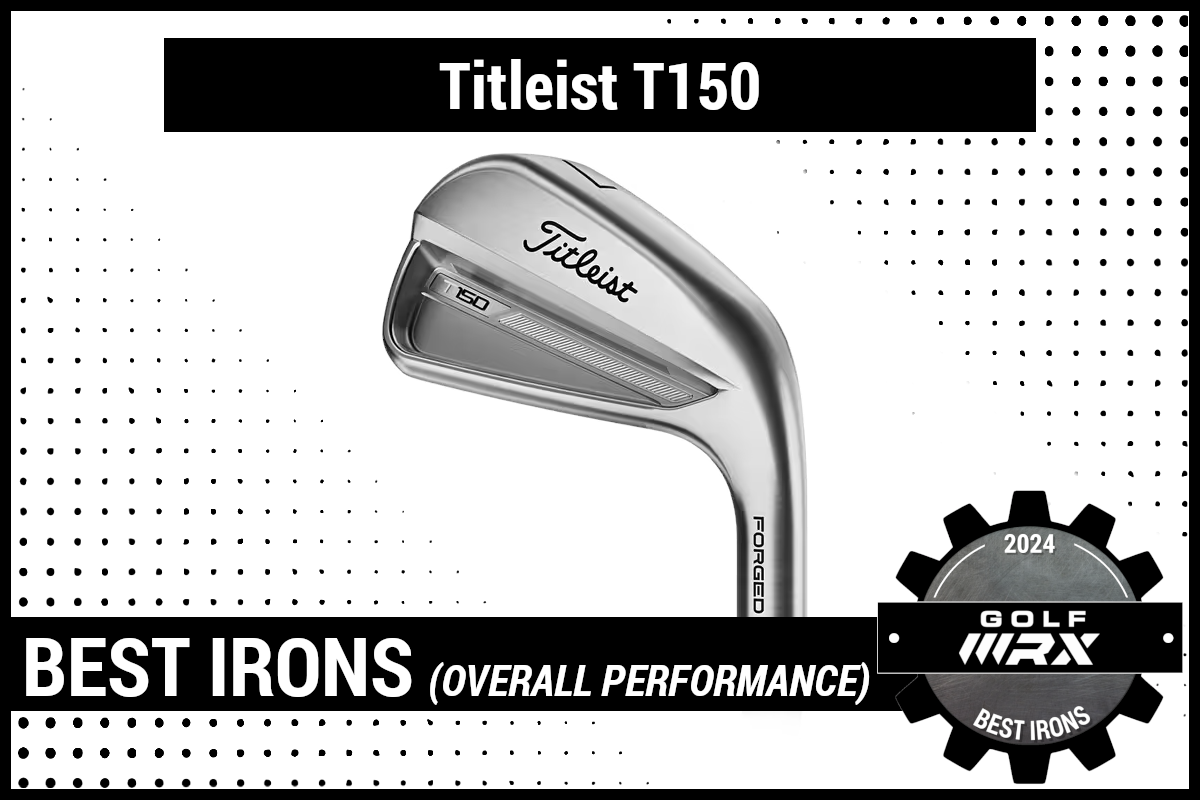
Their story: The T150 is slightly larger than the T100, with a thicker topline to help increase distance and forgiveness. Like the T100S irons that came before them, the T150 irons are built 2 degrees stronger than the T100 irons, as well. To improve feel at impact, the T150 has a muscle channel in the back cavity behind the face for a more solid feel at impact. Like the 2023 T100, the T150 also has D18 Tungsten weights in the back cavity, and a refined sole for improved turf interaction.
Fitter comments:
- “All around great iron and fits a wide range of players.”
- “A perfect club for those single digit handicaps that still want that extra line of defense when it comes to making the jump to a player iron. Hardly noticeable but that added size and offset compared to the T100 makes it much more comfortable to the golfer and fitter.”
- “Best combination of forgiveness, feel, workability, and distance.”
For more photos/info, read our launch piece.
Srixon ZX7 Mk II

Their story: The players iron ZX7 Mk II features PureFrame: an 80-percent thicker portion of 1020 carbon steel forged behind the sweet spot in the body of the iron for soft-yet-solid-feeling impact. Also significant to the design: A refined Tour V.T. Sole Proprietary sole widths, bounce angles, and notches in the heel and toe of the club aid clean contact from a variety of lies.
Fitter comments:
- “What I love about that is for that guy that hits it, like square on the face of the golf club. It’s, this is the way I kind of explain to customers and they hit it like, it’s not gonna be the longest. It’s probably not gonna be the straightest, but you will hit seven iron in the exact same distance every time you hit it. And, and I think that’s the appeals to that better player because like very rarely do.”
- “I’m a personal fan of it. No hot face. No jumpers, does a great job of controlling the spec which we like a lot…quite forgiving. That’s a, that’s a, that’s a major player in that category.”
- “I mean, two of the five fitters out here play them. I mean, they’re awesome, like they’re still, you know, a small compact players iron, but you still get a lot of help and forgiveness out of them, which I like. You see a lot of these on tour that are non, you know, non-contract guys playing them.”
- “They did a really good job of not screwing up a good thing. ZX7 was fantastic. It seemed like 50 percent of the non-contract guys in pro golf played that iron. It continues to give very consistent numbers. The better player wants a consistent number. They need to know it’s going to go that distance. This club does that very well.”
- “Srixon has been the “sleeper” iron company for a number of years now, but I think the secret is out. The ZX7 Mk II fit many different player types, from tour pro to mid-handicapper. The forging is very soft and forgiving, and the iron is very workable for the player with more ability. They didn’t change the shape from ZX7 to Mk II, and I think that’s a great thing.”
For more photos/info, read our launch piece.
Mizuno Pro 245
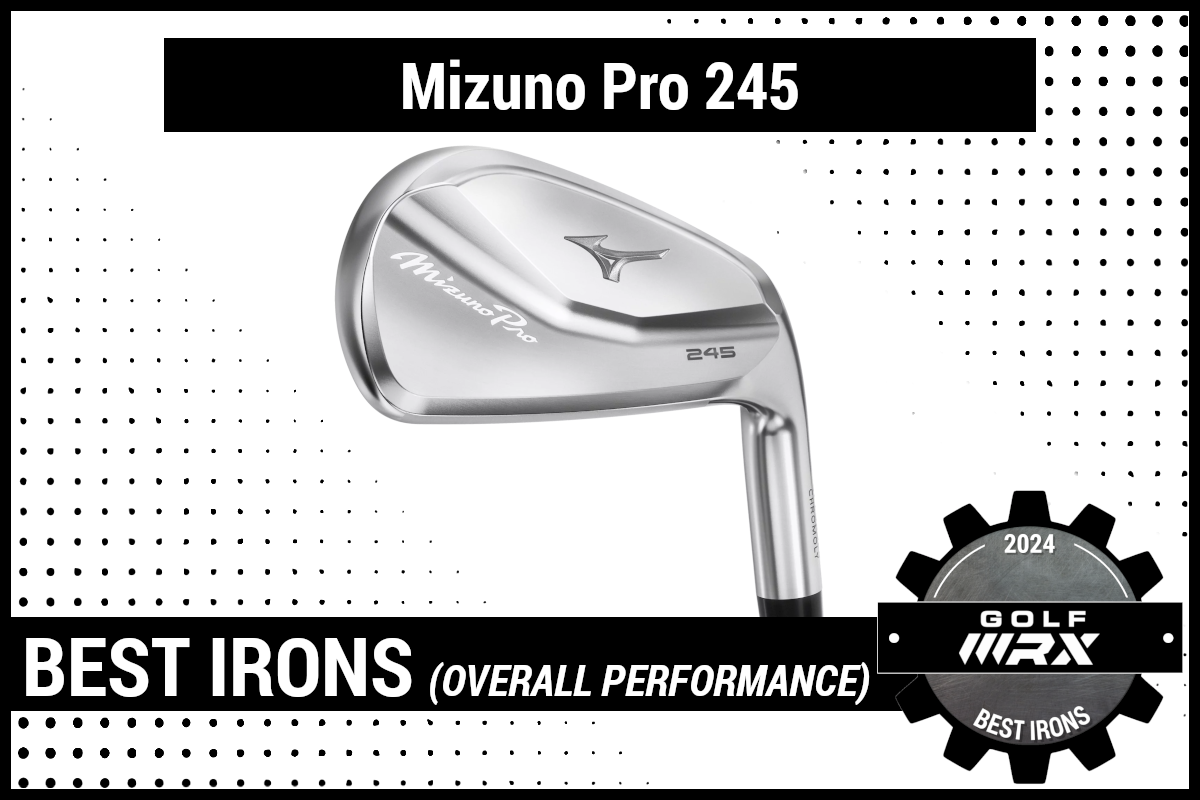
Their story: Pro 245 2- through 8-irons — which are crafted from Gain Flow Forged 4135 Chromoly — feature Hollow Body COR construction for higher COR, higher MOI, and solid feel. Mizuno is also keen to highlight the soft muscle-back feel produced by its Harmonic Impact Technology and the substantial amount of tungsten (47 grams) in the long and mid-irons for ease of launch. Engineers achieved lowest possible placement without contacting the sole for lower and deeper CG via Suspended Tungsten placement.
Fitter comments:
- “Great combination of ballspeed with a streamlined look.”
- “It fits a lot of guys that are blade players but with more distance.”
- “Good looking, forgiving, great feeling players distance iron with very good consistent distance control.”
For more photos/info, read our launch piece.
Best irons of 2024: Meet the fitters
- Adam Rathe: Club Champion
- Adam Scotto: Club Champion
- Adam Seitz: Club Champion
- Aidan Mena: Club Champion
- Alex Dice: Carl’s Golfland
- Alex Praeger: Club Champion
- Ben Giunta: The Tour Van
- Blake Smith, PGA: True Spec
- Bo Gorman: True Spec
- Brad Coffield: Carl’s Golfland
- Brett Ott: Club Champion
- Brian Riley: Club Champion
- Cameron Scudder: Club Champion
- Carmen Corvino: True Spec
- Christian Sandler: Club Champion
- Clare Cornelius: Cool Clubs
- Dan Palmisano: Club Champion
- Dane Byers: Club Champion
- Darren Joubert: Club Champion
- Dennis Huggins: Club Champion
- Drew Koch: Club Champion
- Eric Touchet: Touchet Performance Golf
- Erik Gonzales: Club Champion
- Evan Morrison: Club Champion
- Gus Alzate: True Spec
- Jake Medlen: Stripe Show Club Fitters
- Jake Woolston: Club Champion
- Jake Wynd: Club Champion
- Jay Marino: Club Champion
- Jeremy Olsen: Club Champion
- Jim Yenser: Club Champion
- Joe Stefan: Club Champion
- Joey Simon, PGA: Club Champion
- Jonathan Kaye: Club Champion
- Jordan Patrick: True Spec
- Jordan Rollins: Club Champion
- Kevin Arabejo: Club Champion
- Kevin Downey: Club Champion
- Kirk Oguri: Pete’s Golf
- Kyle Lane: Club Champion
- Kyle Murao: Club Champion
- Marc Roybal: True Spec
- Mark Hymerling: Club Champion
- Mark Knapp: Carl’s Golfland
- Matt Miller: Club Champion
- Matt Rish: Club Champion
- Matthew Gandolfi: Club Champion
- Mike Martysiewicz: Club Champion
- Mike Weis: Club Champion
- Mitch Schneider: Club Champion
- Nicholas Barone: Club Champion
- Nick Sherburne: Club Champion
- Nick Waterworth: Haggin Oaks
- Preston Vanderfinch: Club Champion
- Rick Lane: Club Champion
- Rob Anderson, PGA: Club Champion
- Russell Hubby: Club Champion
- Ryan Fisher: Grips Golf
- Ryan Grimes: Club Champion
- Ryan Johnson: Carl’s Golfland Bloomfield Hills
- Sam Kim: True Spec
- Scott Sikorski: Club Champion
- Scott Felix: Felix Club Works
- Scott Trent: Club Champion
- Sean Pfeil: Club Champion
- Shaun Fagan: True Spec
- Steve Harrow: Club Champion
- Tad Artrip: Club Champion
- Thomas Mattaini: Pull the Pin
- Tony Rhode: True Clubs
- William Buse: Club Champion
- William Cho: NovoGolf
- William Fields: Club Champion
RELATED: Best driver 2024
- LIKE0
- LEGIT0
- WOW0
- LOL0
- IDHT0
- FLOP0
- OB0
- SHANK1
-

 19th Hole2 days ago
19th Hole2 days agoDave Portnoy places monstrous outright bet for the 2024 Masters
-

 19th Hole3 weeks ago
19th Hole3 weeks agoJohn Daly stuns fans into silence with brutal opening tee shot on PGA Tour Champions
-

 19th Hole2 weeks ago
19th Hole2 weeks agoThings got heated at the Houston Open between Tony Finau and Alejandro Tosti. Here’s why
-

 19th Hole3 days ago
19th Hole3 days agoTiger Woods arrives at 2024 Masters equipped with a putter that may surprise you
-

 19th Hole1 week ago
19th Hole1 week agoReport: Tiger Woods has ‘eliminated sex’ in preparation for the 2024 Masters
-

 19th Hole3 weeks ago
19th Hole3 weeks agoCharlie Woods finds it tough going on American Junior Golf Association debut
-

 19th Hole1 week ago
19th Hole1 week agoAddiction, spinal fusion, and scam artists – Everything Anthony Kim revealed in candid interview with David Feherty
-

 19th Hole1 week ago
19th Hole1 week agoAnthony Kim says doctors told him that he ‘may not have much time left’ ahead of LIV return













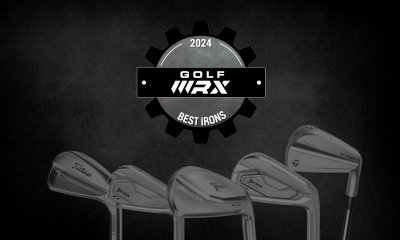



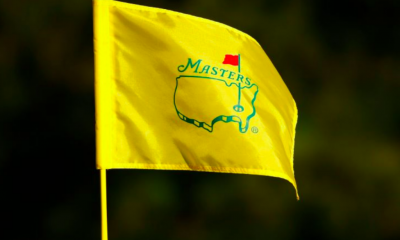



geohogan
Dec 9, 2018 at 9:50 pm
Ball to clubface impact is 5, 10,000 of a second. Our friend Steve is worried counter balancing a golf club, will dull the percussion of the sweet spot; as if he can detect the difference in vibration. The guy must be a human seismograph.
Release is a bad word for many of us, Steve. We know many like you, use your hands to attempt to square the clubface at impact(in other words, RELEASE) and we wish you luck. For the rest of us, we are happy to use body rotation to square the clubface.
Counter balancing is helpful for those of us pulling the butt end of the lever through impact.
Ref. K Miura’s paper, Parametric Acceleration.
Stay away from the junk science papers titled , parametric acceleration, written in America. Pseudo experts who ripped off the concept of parametric acceleration from Miura, to advance their pseudo scientific concept of release of the club(with hands) through impact. Pure fiction, like your “dulling of the percussion of the sweet spot”.
steve
Nov 20, 2018 at 6:48 pm
This is fuuuun …. 😀
Ed
Nov 20, 2018 at 12:28 pm
I always understood that increasing the MOI of the clubhead effectively increased its resistance to twisting on off-center ball contact. It that is true, when you counterbalance a golf club by adding a weight to the butt end of the grip should increase the MOI of the club. If that is true wouldn’t it be more stable during the swing? Thanks
steve
Nov 20, 2018 at 6:26 pm
Nope… because you must link MOI to axis/axes of rotation. The clubhead and putter has an axis related to impact ‘sweet spot’… and the MOI reacts to heel or toe hits.
Counterbalancing with backweighting affects the MOI axis for the entire club. The club feels more ‘stable’ in the swing but upon ‘impact’ it is sub-optimal for exchange of energy.
Bruce
Nov 20, 2018 at 9:36 am
I hold graduate degrees in engineering and understand the physics of objects – like golf clubs – in motion.
Swingweight is a marketing tool developed long ago. It measures how a club “feels” when it is NOT in motion, but has nothing to say about moving the club – hitting a ball.
Hitting a ball is a circular or curved motion motion – as such physics teaches the important parameter is moment of inertia OF THE ENTIRE CLUB – not just club head like driver MOI.
Golf club moment of inertia can be measured quite simply with a pendulum device and matching this across a set produces uniform feel. Single length clubs accomplish this match by design and work well – think Bryson who also understands physics.
steve
Nov 20, 2018 at 6:38 pm
dy/dx Bruce. Swingweight is NOT SwingINGweight, it’s the First/Polar MOI… and when you swing the club you experience the Second/Mass MOI. What is being discussed here is the “great feeeel” a gearhead feels when he backweights a club and if it feeels good it must be goood for distance and control… regardless of the physics… lol
steve
Nov 20, 2018 at 6:47 pm
dy/dx, Bruce …. 😉
Arse
Nov 20, 2018 at 2:41 am
Counter-balancing is the greatest thing since sliced bread.
It works, because unlike steve, none of us would put a half pound of anything onto a swinging golf club, because we are not stupid. There is a limit to everything, just like a very limited knowledge steve has about decency and ethics and life in general as he is disconnected from it.
Counter-balance works because it helps to lever the movement of your hands, and this leverage action is the key. It also helps to make the heavier head weight not feel as heavy. It also helps to square up the face with the mechanical lever action, and there is nothing wrong with adding a mechanical component to the swing to help you square it up.
I am putting it in layman’s terms because that’s all steve understands. He has not given us one single mechanism of action of a lever in a golf swing as it pertains to the MOI of the golf club head in balance with the MOI with the golfer’s swing itself, because he doesn’t understand what MOI is in golf.
drum roll please….. thank you
steve
Nov 20, 2018 at 6:42 pm
Right on A r s e… and don’t forget the great results you get when you counterbalance your pot belly with your big a r s e when swinging the insignificant club MOI/leverage/torque/whatever… LOL
Arse
Nov 21, 2018 at 9:47 am
As everybody was saying, you are just a child. Where is your mother.
steve
Nov 21, 2018 at 2:16 pm
… and you A r s e know nothing about “leverage” and “MOI” within the golf swing because your above comments reveal your abject ignorance about dynamics and the laws of motion. You are beyond ignorant now that you are depending on consensus opinion from the rest of the dummies you descend into stupidity. Pfffttt….
UCB
Nov 22, 2018 at 12:28 pm
You a numpty
steve
Nov 22, 2018 at 3:45 pm
OoOoOoOoooh… that hurts… NOT !!!!!! 😛
Dan Cons
Nov 19, 2018 at 6:42 pm
I’ve recently added weight to the butt of the putter and I’ve been putting better. Jack Nicholas also payed grips with weights in the butt end. Sergio does it also but. Think he uses setting to limit vibration in the shaft.
Dan C
Nov 19, 2018 at 6:41 pm
I’ve recently added weight to the butt of the putter and I’ve been putting better. Jack Nicholas also payed grips with weights in the butt end. Sergio does it also but. Think he uses setting to limit vibration in the shaft.
Z
Nov 19, 2018 at 12:39 pm
Show me how to counterbalance my driver. What swinger characteristics would most benefit counterbalancing
steve
Nov 19, 2018 at 10:00 pm
Go to the hardware store and buy a short steel bolt which will slip into the butt end of your driver shaft. Lightly epoxy it in place. Slip the grip over the shaft and swing away… you will be disappointed. If it works then you have a “lazy release” and the counterweight is helping you flip the handle through impact. Most duffers have a lazy release and can’t square up the clubface at impact. Pa thetic…
joro
Nov 19, 2018 at 12:00 pm
I have a set of Wilson C00 Irons that I put a set of 165gr. grips on. They feel great, a little light in the head feel but they feel good. The benefits are that they are much straighter and longer than before and easy to swing. I have also done the same with a 5 wood and pow. I have always been a head feel guy but as I am much older now it is all about picking up speed, and this really helps.
steve
Nov 19, 2018 at 10:03 pm
The CW helps your ‘older’ swing because you have developed a “lazy release” and your clubhead wobbles approaching impact. The CW helps you flip the handle at your slower swing speed. What you ‘feel’ is the CW flipping your weak hands.
Arse
Nov 21, 2018 at 9:48 am
Yeah, that’s why a majority of the long drivers use counter balance. You’re so dumb
steve
Nov 21, 2018 at 2:20 pm
Are you certain about that… and if so please provide proof of your asinine a s s ertion…. we’re waiting … go ahead… and don’t fall into your own hole… (_º_)
HDTVMAN
Nov 19, 2018 at 11:39 am
Very good explanation. I sell Ping products and had no idea that the Alta shaft was counterbalanced. It’s a good selling point.
steve
Nov 19, 2018 at 10:08 pm
It is if your customer has a slow swing speed less than 85 mph.
Dtrain
Nov 19, 2018 at 11:23 am
I can’t for the life of me understand why you would want this in a putter. I went through a putter fitting and found I totally lost the feel of the clubhead. Then again I had these new fat grips as well, I like the more traditional size. I want to feel the putter swing. YMMV.
Jay Anderson
Nov 19, 2018 at 6:10 pm
I use a Boccieri heavy putter because, being self-employed, my nerves are frazzled. For me it feels as though the grip the shaft ,and the putter head are all one-piece. It is a revelation when I first tried it.
steve
Nov 19, 2018 at 10:06 pm
Your “feel” is correct… because the shift of weight towards the butt end deadens impact and feel of clubhead. It’s a scientific fact.
Matt
Nov 18, 2018 at 12:54 am
In General which types of swingers benefit, or don’t, from counterbalancing?
steve
Nov 18, 2018 at 2:08 am
In General… counterbalancing is a fraud because it dulls the sweetspot on the putter or club face. It makes swinging the club feel easier but that is not the solution to a slow speed swing. Counterbalancing a putter is totally wrong and counterproductive to energy transfer from putter head to ball.
HS
Nov 18, 2018 at 10:13 am
again, this steve dude know nothing, because he’s a moron
steve
Nov 18, 2018 at 2:58 pm
I’ll put my engineering degree up against your community college diploma in sport journalism any day… doofus
Big Tata
Nov 19, 2018 at 2:57 am
What a loser
Ee
Nov 19, 2018 at 3:01 am
Explain to us what dulling the sweetspot on the putter face means in scientific terms. How big or small a sweetspot does it have to be to feel any dullness at all. What kind of sweet spot does it have to be. What sort of materials would make for not so much dulling or not. Explain to us what the physics involved are in how the energy is transferred to the clubhead from the handle, because no swinging is actually required in a putter, when the whole putter can be moved sideways without any sort of pendulum stroke at all, if one so desired.
We’re waiting, you idiot
steve
Nov 19, 2018 at 1:50 pm
The “sweet spot” on the putter face is NOT the Center of Percussion… which is the point on the entire putter, head, shaft and grip, where you achieve maximum transfer of energy. The CofP is somewhere above the putter head. The “sweet spot” on the putter head is just longitudinal gravitational axis you get when you spin the hanging putter from the butt end. This is where the overall putter m a s s is equal on both sides of the axis. The “sweet spot” is just a line on the putter face and cannot be expanded with heel-toe weighting. Adding more weight to the butt end raises the CofP and makes the energy transfer less efficient and dulls the feel of impact. Hope that help you, you idiot.
Ee
Nov 19, 2018 at 2:00 pm
No, it doesn’t, because you don’t know anything. Well done for pulling that info from Wiki like everybody else, though, at least you can read.
Center of percussion doesn’t work in a golf club, because we have a lie angle that’s offset. If you want to putt vertical, go ahead, you might find that percussive sweet spot better, but we have to putt on a 20 degree lie, so your theory goes bye bye, numbnuts, unlike a bat, which is in a straight line, as is a tennis racket.
Counter-balance works because we use the sloped lie angle to sweep the head of the club or putter across and enables some to create a better handle pivot position in motion off the plane axis.
steve
Nov 19, 2018 at 9:40 pm
I’m not going to argue first year Engineering Dynamics with somebody who is ignorant like you. If you want to destroy yourself, add 1/2 pound of steel to the butt end of your putter as a counterweight and you will most certainly feel dull ineffective impact. CofP is solely a function of distribution of m a s s for a club, bat or racket regardless of it’s orientation. BTW, you can calculate the theoretical CofP for an eccentric object… as you can for CofM.
Timothy
Nov 19, 2018 at 12:37 pm
I’m a senior golfer with a pretty slow swing speed. If’ve found that my Ping hybrids, which have an Alta counterbalanced shaft, have a higher ball flight and great feel. You can actually feel the kick of the shaft in your downswing. From my point of view they’re beneficial for a slow swinger like myself.
steve
Nov 19, 2018 at 1:56 pm
Your problem is that you are getting weak and can’t develop enough hand speed to crisply release the club through impact. Counterweighting will help you flip the hybrid club faster as you approach impact. The higher ball flight and greater distance is because you are squaring the clubface with the help of the counterweight. If you had an efficient swing without the counterweight you would hit it even farther.
steve
Nov 19, 2018 at 9:42 pm
Your problem is you are age weakening and can’t develop enough hand speed to crisply release the club through impact. Counterweighting will help you flip the hybrid club faster as you approach impact. The higher ball flight and greater distance is because you are squaring the clubface with the help of the counterweight. If you had an efficient swing without the counterweight you would hit it even farther.
steve
Nov 19, 2018 at 9:47 pm
Your problem is you don’t develop enough hand speed to crisply release the club through impact. Counterweighting will help you flip the hybrid club faster through impact. The higher flight and greater distance is because you are squaring the clubface with the help of the counterweight. If you had an efficient swing without the counterweight you would hit it even farther.
steve
Nov 19, 2018 at 9:52 pm
Your problem is you can’t develop enough hand speed to crisply release the club through impact. Counterweighting will help you flip the hybrid club faster as you approach impact. The higher ball flight and greater distance is because you are squaring the clubface with the help of the counterweight. If you had an efficient swing without the counterweight you would hit it even far ther.
Arse
Nov 21, 2018 at 9:50 am
That’s weird, how does a fulcrum work in a pivot motion? What do you think the counterbalance does to the handle end? It flips the club faster, therefore you gain more clubhead speed because it acts as a better pendulum. Duh
steve
Nov 21, 2018 at 2:31 pm
A fulcrum is the support about which a lever pivots. In a free body, such as a club in a golfswing, the point around which rotation occurs is not a fulcrum, it’s an axis. At the top of swing reversal the left or rear hand is a fulcrum. When the club is rotating in the downswing it is kinetic energy flow that is causing rotation, not a hand force couple… unless you believe you should be torquing the club handle through impact…
sam navarro
Nov 17, 2018 at 7:11 pm
how will installing jumbo max grips effect swingweight and balance
steve
Nov 17, 2018 at 9:16 pm
Heavier jumbo grips will move the club balance point towards the butt end.
Swingweight is the static First MOI as in a lever calculation M x radius.
MOI matching is the dynamic Second MOI and is calculated by M x radius^squared.
…. where M = m a s s … which is blocked in the swearbot filter…!!!
geohogan
Nov 17, 2018 at 11:18 pm
5 grams of weight added to the butt end of the golf club will lower SW by about one SW.
Add 50 grams, and SW can change from D2 to C2.
Replace a 50 gram putter grip with Jumbo Max 122 grams and SW will change by about 14 points.
geohogan
Nov 17, 2018 at 11:26 pm
For every 5 grams added to the butt end (moves Center of gravity of the entire club toward the butt), 2 grams of weight can be added to the clubhead to offset the counterbalancing and SW will be the same as before counter balancing and Force applied to the ball will be increased, assuming acceleration remains the same as previous.
Since we feel more heft in the hands, our subconscious will tend to produce more effort, that may also increase acceleration.
(just as we swing with much more acceleration when we grip the club at the clubhead rather than the butt end of the club)
geohogan
Nov 18, 2018 at 12:07 am
Force=ma
To offset counterbalance of butt end. eg 10 grams
4 grams can be added to the clubhead. That will put SW back where it was before counterbalancing + add to the Force applied to the ball, assuming acceleration is the same.
Adding weight to the butt end also fools the subconscious to use more effort, just as we exert more effort to pick up an object we know is heavy compared to an object that is known to be light in weight.
steve
Nov 18, 2018 at 2:12 am
1 ounce = 28.4 grams.
Adding 50 or more grams to the butt end of a club or putter is scientifically insane.. 😮
Meme
Nov 18, 2018 at 10:15 am
you only wish you could counterbalance your boyfriend’s pole steve
steve
Nov 18, 2018 at 2:59 pm
… like you do?…. girly boi….
gps
Nov 17, 2018 at 11:09 pm
5 grams of weight added at the butt end will change SW by about one swing weight.
A std grip has been 50 grams. Force=ma ie mass x acceleration. By counterbalancing a driver at a given SW, we can then add weight to the clubhead to bring SW back to normal, increasing Force
applied to the ball with the same clubhead speed before counter balancing.
Counter balancing fools our subconscious to exert more effort due to more heft felt in the hands, just as we apply more effort to lift an object that we know weighs more than a lighter object.
Change 50 gram putter grip on putter with D1 swing weight; will become about C5 swing weight with a 122 gram grip.
gps
Nov 17, 2018 at 11:14 pm
5 grams added to the butt end will change the SW by about 1 SW point
Force=ma
ie force applied to the ball is equally dependent upon mass of the clubhead and acceleration.
If shaft is counter balanced, then we can add weight to the clubhead to increase force applied to the ball, without changing the swing weight feel of the club.
steve
Nov 17, 2018 at 6:13 pm
Scientifically speaking…. counterbalancing is adding weight to the handle butt end… NOT just adding weight in the top 14 inches unless the shaft is top heavy.
Raising the center of m a s s of the entire club will also raise the center of percussion and dull the clubface sweet spot. Not good.
steve
Nov 17, 2018 at 6:14 pm
Why is the forum swearbot filter so sensitive that it won’t post the word “m a s s”…. sheeesh
aga
Nov 18, 2018 at 6:56 pm
…. it also bans any word that contains the syllable “a s s”… like cla a a ify… a s s ume… ma s s ive… and on and on … it’s a joke !!!!
steve
Nov 19, 2018 at 9:55 pm
… also “f a r t her” …. stooopid swearbot filter gone ‘pc’…!
steve
Nov 17, 2018 at 6:12 pm
Scientifically speaking…. counterbalancing is adding weight to the handle butt end… NOT adding weight in the top 14 inches unless the shaft is top heavy.
Raising the center of mass of the entire club will also raise the center of percussion and dull the clubface sweet spot. Not good.
JP
Nov 17, 2018 at 9:21 am
I don’t have audio here. Can’t these be transcribed?
aga
Nov 18, 2018 at 6:57 pm
… wha? I can’t hear you… 😮